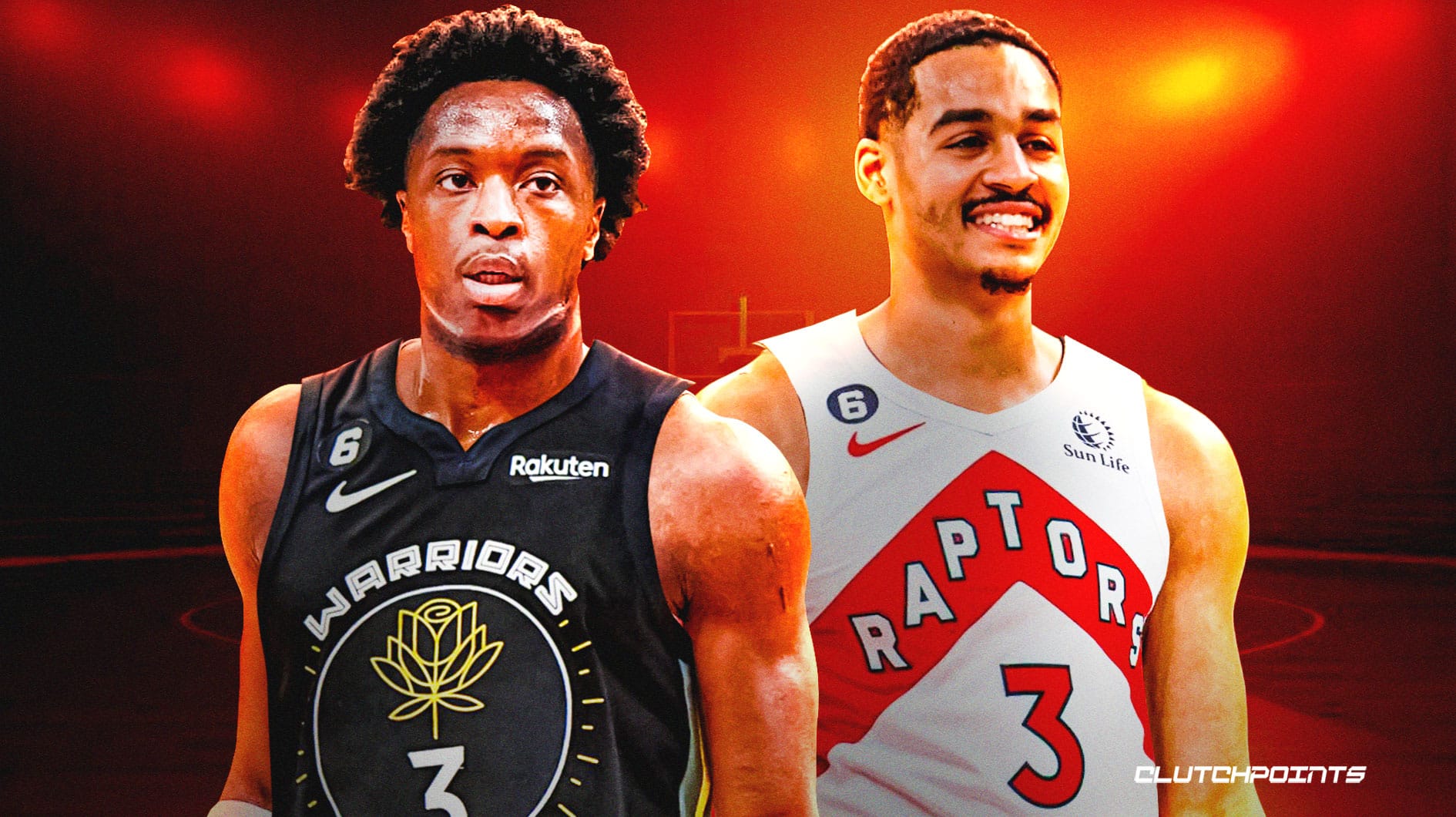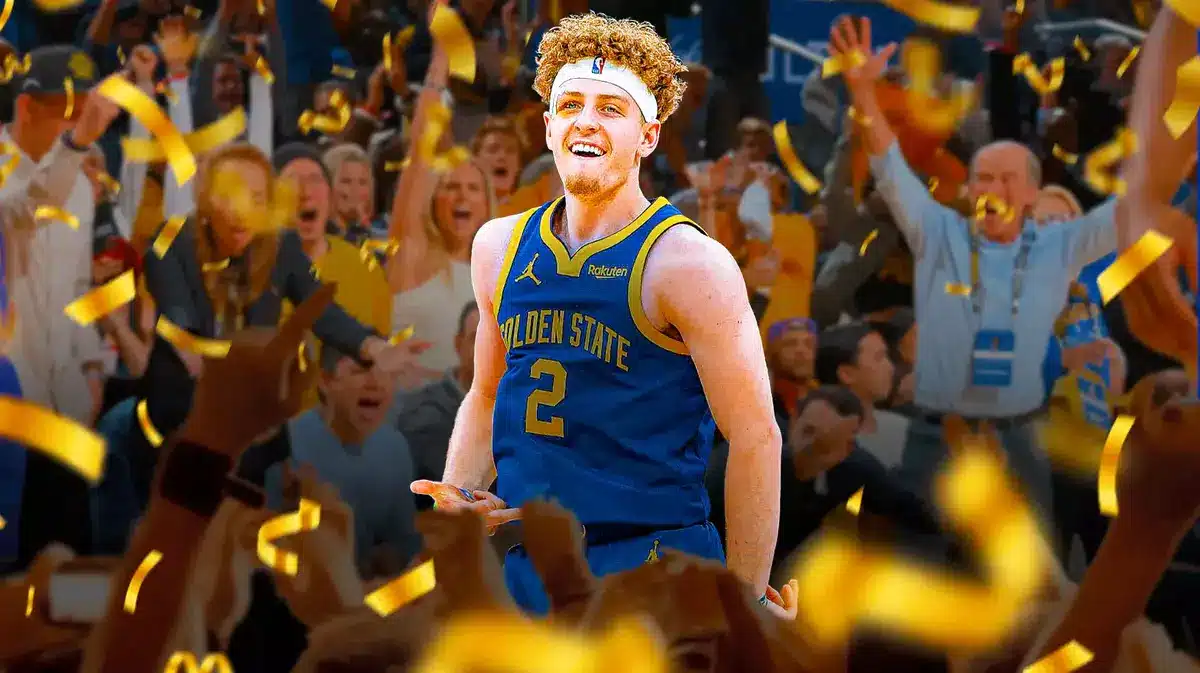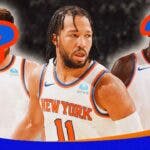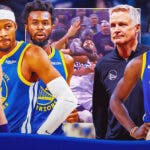The Golden State Warriors' list of plausible difference-making additions at the trade deadline just got shorter.
OG Anunoby is no longer a potential trade target for the Dubs, the Toronto Raptors rocking the NBA world by sending him to the New York Knicks on Saturday in exchange for Immanuel Quickly, RJ Barrett and a 2024 second-round pick. Precious Achiuwa and Malachi Flynn are also headed to New York in the deal.
Golden State, obviously, isn't directly involved in the trade. But Anunoby has been rumored as a plausible trade acquisition dating back before last season, the Dubs even reportedly making a “hard push” to land him in at the 2023 trade deadline only to balk at Toronto's final asking price for arguably the best wing defender in basketball.
Could the Warriors have been more serious players in the Anunoby sweepstakes almost a year later? Frustrated as Dub Nation may be by Anunoby ending up with the Knicks, the truth is the Raptors' ultimate return for him is more appealing than any realistic package that Mike Dunleavy Jr. and the front office might've offered leading up to Feb. 9.
Could the Warriors have really beaten Knicks' offer for OG Anunoby?

It's easy to construct winning trades from only one team's vantage point. Moving Jonathan Kuminga, Andrew Wiggins and a 2026 first-round pick for Anunoby and the contract of Otto Porter would've addressed Golden State's dire need for a reliable, dynamic two-way forward, easing Steve Kerr's rotational numbers crunch while clearing future salary to accommodate Anunoby's massive new deal this summer.
But Toronto's interest in that deal would only go so far. The whole point of trading Anunoby was to reduce positional and stylistic redundancy around franchise player Scottie Barnes, whose ongoing rise toward full-fledged stardom will continue into his mid-20s. Keeping Anunoby on the books going forward—not to mention Pascal Siakam, another possible Warriors trade candidate—would've not only curbed Barnes' individual development but kept the Raptors in urgent win-now mode with their young cornerstone surrounded by expensive veterans.
Wiggins' widespread struggles in 2023-24 don't require further explanation here. He's negative value on a contract that will pay him roughly $85 million over the next three seasons.
Kuminga, meanwhile, becomes eligible for an extension after this season prior to hitting restricted free agency in summer 2025. He's still at his best offensively attacking with the ball in his hands, getting out in transition, eating space as a bulldozing penetrator and working from the post and short midrange in isolation—very similar to Siakam. Barnes and Anunoby, while improved long-range shooters, like to operate in those spaces, too.
Adding Kuminga as the centerpiece of an Anunoby trade with Wiggins behind him just wouldn't have made sense for Toronto's roster, only exacerbating an existing problem instead of solving it. Barrett's no all-court floor-spacer, but he's a much more advanced secondary and tertiary playmaker than Kuminga and Wiggins, with natural passing feel they just don't have.
Quickley is the real difference here, though. Toronto botched Fred VanVleet's exit last season, holding onto him at the trade deadline only to see him walk to the Houston Rockets for a bigger payday in free agency. Masai Ujiru and company reacted by signing Dennis Schroder, enjoying a solid first season with the Raptors. But he was never a long-term answer next to Barnes due to both streaky, low-volume 3-point shooting and the fact he's already on the wrong side of 30.
Still just 24 and yet to serve as a full-time starter amid his fourth campaign in the NBA, Quickley profiles as everything Toronto wants from its point guard of the present and future. He's shooting over 40 percent on both pull-up and catch-and-shoot triples, per NBA.com/stats, and is extremely comfortable exploiting overzealous closeouts with a couple dribbles before stopping for his patented floater—a tough shot for most players he's hitting at a stellar 59.3 percent clip.
Quickley is an active, committed defender with long arms and the wiry strength necessary to fight through screens on and off the ball. He averages 1.8 deflections per 36 minutes, same as Schroder, and the Knicks' defensive rating has been much stingier with Quickley on the floor every season since they took him with the No. 25 overall pick of the 2020 draft.
Would including Brandin Podziemski have been the difference?

Golden State didn't so much make a mistake as New York won the bidding for Anunoby. The reality is that, barring the inclusion of Brandin Podziemski in an Anunoby trade, the Raptors' roster construction always ensured the Knicks' offer was going to be superior to pretty much any the Warriors could've mustered.
There's also no guarantee a core of Stephen Curry, Draymond Green, Klay Thompson and Anunoby would've vaulted them up the Western Conference hierarchy in 2023-24. Would surrendering Podziemski—a rookie impact player and pitch-perfect stylistic fit with Golden State on both sides of the ball—along with Kuminga and Wiggins, have been worth it for the Dubs absent the confidence of surefire contention?
There's a case to be made the Warriors erred by electing against pushing their chips in for Anunoby but not right now. They'd have been better off trying to meet Toronto's lavish price a year ago with Jordan Poole as the stand-in for Quickley while also offering Kuminga, Moses Moody and a protected future first-round pick to bring Anunoby to the Bay Area.
Would that have been enough for the Raptors? Perhaps not given their steep demands in Anunoby trade talks last season coupled with Poole's highly publicized decline from his 2022 playoffs peak. At least that framework would've addressed Toronto's need for a young creator to grow alongside Barnes, though, unlike ones from this season that didn't include Podziemski—whose viability as a full-time primary creator, unlike Quickley's, remains somewhat of a question mark.




